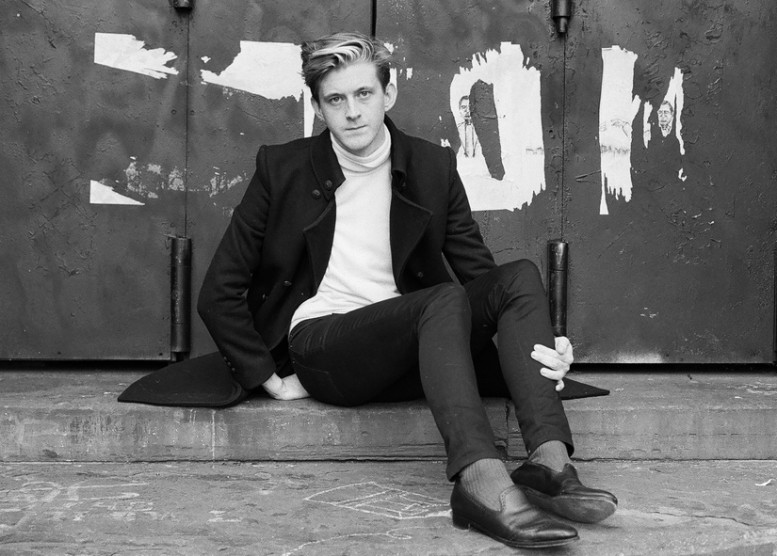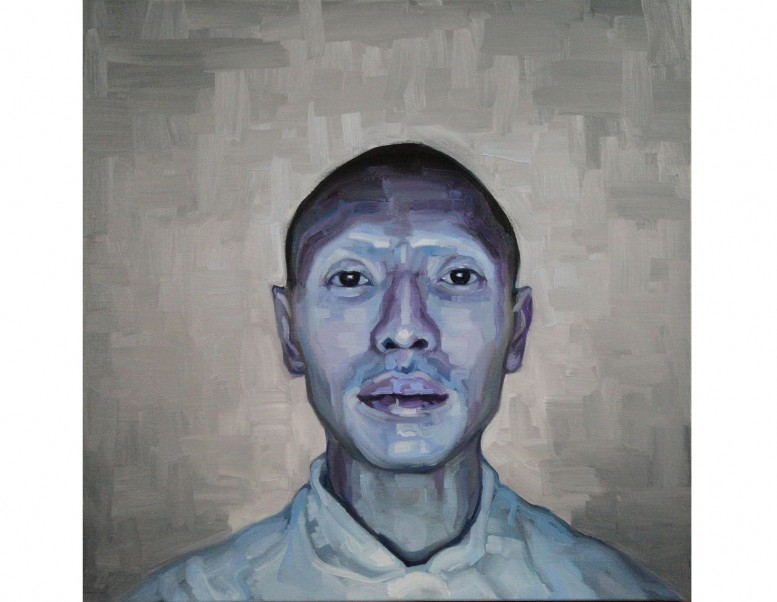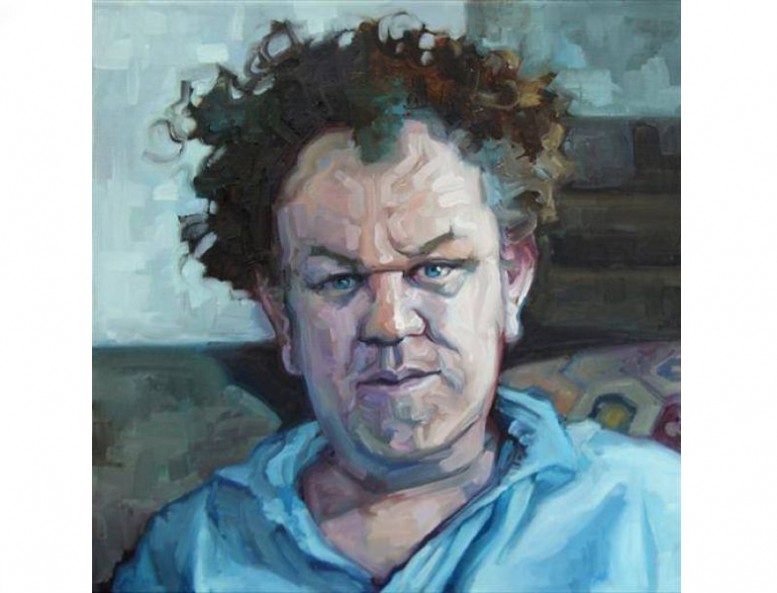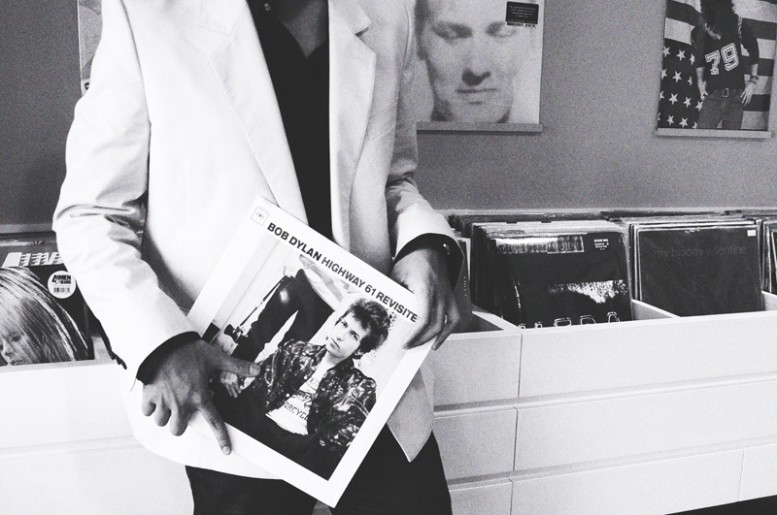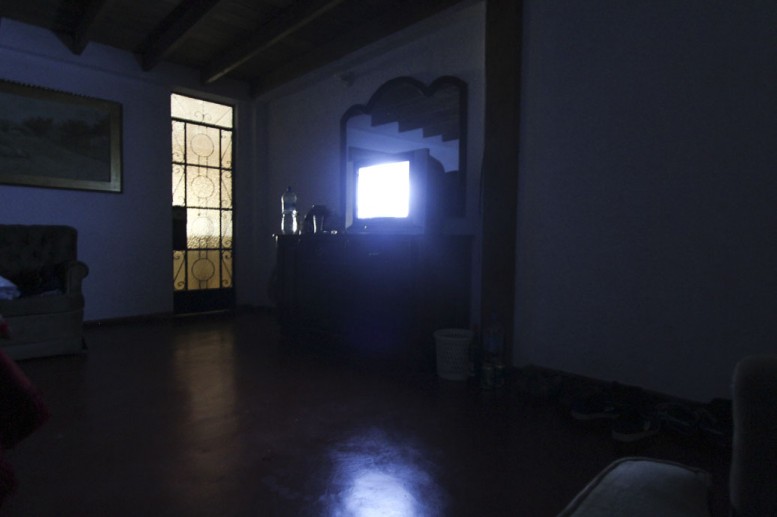The editor-in-chief of The Paris Review, Lorin Stein, doesn’t watch Gossip Girl. He does, however, stand on tables when giving toasts—something he is quite adept at. Tonight’s is in honor of Pulphead, a new collection of essays published by the esteemed literary journal’s Southern editor, John Jeremiah Sullivan, or “JJ,” as Stein lovingly dubs him. Ever charming and poised, Stein relates from his lofty perch, to a mixed audience of bright-eyed Ivy Leaguer interns and lit-world “old boys” alike, the story of his trip to Scotland with JJ, their semi-successful hunt for the mythic beauty of Loch Lomond, and JJ’s baffling wildflower-picking excursion (“When I find a really good wildflower, I like to take a picture of it so I can look it up and identify it when I get home… don’t worry, I don’t use it in my writing or anything like that”). The first time I met Stein, he advised me not to go into the editing/publishing business (find out why in the interview below).
The second time, we ended up having an in-depth discussion about Gossip Girl as I photographed him sitting in an armchair in his spacious, book-lined office at the very back of The Paris Review’s Tribeca loft (the inside of which resembles the late George Plimpton’s living room, cozy and replete with books, framed black-and-white photographs and old Paris Review posters, oriental rugs and taxidermied birds—purportedly the addition of Philip Gourevitch, the second editor-in-chief, who Stein succeeded in April 2010). To be fair, the conversation arose in an academic discussion—but I was nonetheless surprised, and pleasantly so. With Stein, it seems there is never a dull moment. At just 39 years old, he is the third and youngest-ever editor-in-chief of the prestigious literary journal—and while he plans to steer the Review back in the direction of its Plimptonian, purely fiction-and-art roots, there is no doubt that he brings a fresh, unique and decidedly hip perspective to the table. His attention to detail in combination with a certain facetiousness make him into a perfectly Baudelairean mixture of the ephemeral and the permanent, the modern and the classic— much like the Review itself—and though (like George Plimpton) he enjoys a good party, the eloquent Stein radiates editorial dexterity and pure, joyful devotion to his work.
“They’ll of course use the smoking picture, won’t they?” he smirks when I ask him to hold the hand with the cigarette up for another shot. He drapes a leg over the arm of the chair, sipping his whiskey—and yet somehow, in his revelry, he remains utterly composed. About a week later, I was lucky enough to spend some time picking Stein’s enigmatic, highly coveted brain. We talked about the editing and publishing business, the future of print and the effects of technology on the literary world (and later, off the record, about Morrissey and David Bowie).
ANNABEL GRAHAM: When we spoke last spring, you told me not to go into the editing/publishing business. Can you explain why? Do you have any advice for young people who want to go into the literary business?
LORIN STEIN: Well, because… book publishing is contracting, and within book publishing, and within literary book publishing, the sales forces are contracting, but the editorial departments are also contracting, so I don’t think I would have had the kind of luck I’ve had if I were to do it now, and I’d hate to see someone spend three years… you know, slaving away as someone’s secretary, essentially, and then not even having the chance of a promotion. It was always true that most people who worked didn’t then get to become editors, but I think it’s gotten even trickier now.
GRAHAM: Are sales contracting?
STEIN: I don’t know whether sales are contracting, but in literary publishing, new literary publishing, it seems to me that there are fewer jobs. There are fewer books that are… there are fewer houses that are devoted to that… I think that there are fewer books that are in that kind of very special corner of the world of letters. I think the publishing business has pretty quickly gotten used to the idea that the future is going to be gizmos, and they’re getting smarter, quickly, about gizmos.
GRAHAM: You mean like the iPad, the Kindle…
STEIN: Yeah, reading devices. E-books. So, if you and I talk in a year… and I hope this won’t be true… it may be that the climate has changed.
GRAHAM: Right. Well, going off of that, do you feel that publishing is a dying art? Will print ever be obsolete?
STEIN: I think print is in more trouble than most people think. And less trouble than some people think. James Wood just wrote this very good piece about trying to sell off his late father’s library—in last week’s New Yorker—and he stumbled on this fact, which is that there isn’t really the market for second-hand books that there used to be. That market is changing so quickly, and nowadays what’s going on is that these used bookstores, these used book-dealers are buying up, very cheaply, they’re filling these warehouses full of these books that they’re making available online, but more and more, you can pay a low price—you may not get to see a photo of the book the way you have been able to do for the past five years, you’ll get a book in some condition that you don’t know what it is, maybe you’ll buy five copies before you get an okay copy, but right now the price of these books is very depressed, so they’re very available, but the shelf space, I think, is about to disappear, and in about 10 or 15 or 20 years, I think there are going to be books that are actually very hard to find. Which is really different from the way it is now.
GRAHAM: Yeah. You can find anything.
STEIN: You can find anything, which is not going to last forever, it’s going to be very hard in cases where you need the hard copy, and there are a lot of books that are not going to be easily found. And I know your question was about print, and presumably what you mean is new books or magazines?
GRAHAM: Well, no, I think what I was asking is whether you think the internet is going to completely take over, if for example in the future The Paris Review might be only online, or books may only come in the virtual form, like on an iPad.
STEIN: I do think that there will be more and more books that will only come in the virtual form. There’s a really good argument, one of the really good arguments, for The Paris Review to always put out a print edition, which is, do you have anything stored on CD? Emails or anything, stored on CD?I worked for a publishing house that, around 1999, started using email regularly. It didn’t happen all at once; different editors took longer to do it. You would still hear people giving dictation and typing when I started.
GRAHAM: Wow. [LAUGHS]
STEIN: And I had never had an email account. And my boss and I both learned how to use email together. And if you look at the archives of that publishing house, all of our correspondence—the company would delete things after 90 days or something—so we were keeping email files but we realized… I took my email files, the ones that I’d saved, I copied them and put them on a CD, so that I could have them… it turns out that CDs that you buy at the drugstore, they only last for a few years! And even just getting the email off my computer, it took someone who was an expert, really, because just in the 12 years I’d been there, the systems had changed so much. Now, if you put a book on a shelf, if you put a piece of paper on a shelf, it stays there until you tear the shelf down. If you store things electronically, you need always to be… what’s the word I want… every time you switch hardware, you need to re-save them, you need to transfer them to a new medium, essentially. And sooner or later, you’ve done it, you know? And that’s part of the reason for publishing stuff on paper, if you do care about the lasting value, I mean maybe you’re kidding yourself, but I don’t want something to have that—that as soon as the hardware finishes it will disappear. I want to be the hardware, I want to own the hardware!
GRAHAM: Makes sense. So… I’m sure you get this question all the time… How has The Paris Review changed since you’ve taken over? I understand that when Philip was the editor, there was a distinct move towards nonfiction and photography that created a bit of controversy, and that you have begun to steer the magazine back in its original purely literary and artistic direction, much like George Plimpton. Can you talk about that a little bit? What is your ultimate goal for the magazine, and where would you like to see it go?
STEIN: It’s true, Philip was interested in publishing pure reportage. And reportage just isn’t something that I know that much about. And I also think that—especially now—even on the web, there’s so much good reportage, that it would be hard for us to distinguish ourselves, I mean Philip could do it, I don’t think I can—and my real love, I mean, I think the thing that needs the most help, is short fiction and poetry. And essays. And by essays, I mean something very…
GRAHAM: Like what John Jeremiah Sullivan [the Southern editor of The Paris Review] writes?
STEIN: Like what John writes. Though he sometimes writes reportage. Some of what he writes wouldn’t be right for the Review. And I guess I think of reportage as things that are tied to matters of real concern in the world, the essays that John writes that we’ve published are more personal essays. I want the Review to be what I think it often has been, which is America’s literary magazine. I want it to be a laboratory for the best new fiction and poetry and this funny thing that you call the essay. And I want it to maintain its integrity of, especially, it seems like choosing the writers—I want it to reflect what we really think is important, not just what’s fashionable or what sells, but the writers who really interest us as writers. And I think that there’s more work for a literary magazine to do now than there used to be.
GRAHAM: How so?
STEIN: Well, the world doesn’t have much room for literary magazines. And, well… you and I could put out a web magazine tonight. And we could take a Xerox machine, and we could pretty easily distribute a magazine together. In fact, there are many, many magazines. But it’s become very hard to reach a large circulation—of people who really read it and care about it. And to make them feel the importance of what you’re doing, that’s what’s gotten to be hard, for lots of reasons.
GRAHAM: Especially since there’s such an inundation of stuff being put out, all over, you know, blogging, and…
STEIN: Bingo. And, well, a lot of it’s very good. There’s a lot of crap, but that’s always been true. The tricky thing is that people like you and me have some very good claims made on our attention. I mean, Breaking Bad is really good!
GRAHAM: Is it? I’ve been hearing that.
STEIN: It is. But the thing is, there are only so many hours in a day. And even—I’ve never owned a TV as a grownup. But now, on our computers, the very things we use to do our work... we have these distractions. That’s the trouble. It’s not the crap so much as it’s the good stuff… that edges out the kind of reading that happens with short stories and poems. And, for that matter, novels.
GRAHAM: Yeah. Did you always know you wanted to go into editing, and can you tell me a bit about the trajectory of your career, how you got started… and what you find to be the differences between editing books and editing short stories for the Review?
STEIN: There was a guy who came to visit my school when I was in second grade and talked about how a book gets made. And I thought that was what I wanted to do. And I started making books, I was always making books. I found it, just… the idea that you could just make a book was just such a big deal for me. I did think I was going to be a writer… I didn’t realize I was never going to be a writer, but… I went to a writing program, I tried to write a novel, and realized that I had absolutely no talent.
GRAHAM: Did you study writing in college?
STEIN: No. After college I didn’t know what to do with myself, and my college advisor said that he thought I could get a teaching fellowship in a writing program. Well, I’d been writing, of course I’d been writing in college. I’d been trying to write poems, and fiction… in high school too, I always wanted to write, and I thought… that maybe I could be a professor of English, and I got turned down from the PhD program that I wanted to go to, and… another PhD program called me and made an offer to me, and they said… maybe you’ve had this phone call… you have x number of years to finish, and just to be clear, you’re going to be working mainly on the 1890s, and also the 1840s, and I’m thinking, I can’t do this…
GRAHAM: So there were restrictions put upon you in terms of what you had to study?
STEIN: Well, no, it was my idea; I had applied. I’d said I wanted to be an Americanist and that the periods that interested me were the 1890s and the 1840s. Once it became an actuality, once it became an actual phone call, I thought, Christ Almighty, get me out of here! My advisor said, the only thing I can suggest is that I bet you can get into this poetry program, and it’ll be a teaching job, so you’ll be paid, and you’ll be able to see what you’re like as a teacher. Well, it turned out that I was a terrible teacher, and I couldn’t write, and… so I came to New York thinking I’d be a novelist, and couldn’t do that, so I got a job as a secretary, essentially, at Publishers Weekly, and started editing a lot of the little reviews. And because I was there, I got to know which publishing houses interested me… and there was one that I really, really liked, so I just decided that I’d get a job there.
GRAHAM: Which one was that?
STEIN: It was the one I ended up working at, Farrar, Straus & Giroux. So I tried to get different jobs that would make me more attractive to them, but no one would even give me a callback, because I was so obviously out of their… [LAUGHS]
GRAHAM: So how did you realize that editing was your calling, so to speak?
STEIN: I edited the literary magazine in high school, and in college, and when I was a kid my father hired me to edit for him.
GRAHAM: Was your father a writer?
STEIN: No, he and my stepmother ran a nonprofit in Washington, where I grew up. I think I must have been kind of good at it, because I loved it from the beginning; I loved it much better than I liked writing. I’ve always found writing very hard and I’ve always found editing a lot of fun. To answer your question, about the difference between editing short stories and novels, it’s very different. With a novel, you really live in the book for a few weeks, and a short story, you read it in a few minutes and think about it, and then you go back to it.
GRAHAM: This is a bit of a loaded question, but who are some of your favorite contemporary writers?
STEIN: Oh, I can’t tell you. Not unless you’re willing to become my bodyguard.
GRAHAM: All right, then how about a few of your favorite authors that have passed away already?
STEIN: Dead people? Recently dead, or long dead?
GRAHAM: Your choice. Either.
STEIN: Last night, as I was falling asleep, I was thinking about how hard it would be to explain to someone who’s not American how much Mark Twain means to us… and to me. I mean, I know that he’s a national hero and stuff, but it’s kind of weird that our national hero writer should also be our greatest writer, and to me he is. And he is an icon for us. And then… Proust matters a lot to me, Tolstoy matters a lot… David Foster Wallace, among the recently dead… I mean, it’s hard to answer that question, you know.
GRAHAM: What is your favorite aspect of your job, and the literary world in general?
STEIN: It’s a lot like being in college. I think I’ve been able to read more than I’ve been able to read since I graduated from college. It’s also like being in college in the sense that there’s often a gathering about to happen with people that you like, and I miss that about college. I think the amount of freedom, and also the chance to… put out a magazine. And a web magazine, too. It’s really fun. It’s all really fun.
GRAHAM: I think The Paris Review definitely looks one of the more “fun” literary journals. Serious, but also fun.
STEIN: We try. If it looks like fun, it’s probably because it is fun to do. We’re all very… we can’t help being serious, and we work very hard but there are not very many of us, its’ a very tiny team, so we’re always up in each other’s business, but it’s really great in the sense that our deputy editor is also in charge of the t-shirts, and that our associate editor, he used to be an assistant but he’s also the guy who organizes the interns and designs our advertisements and thinks about computer stuff.
GRAHAM: That’s nice… not so many fingers in the pot, like a lot of magazines and newspapers.
STEIN: Right.
Text and photography by Annabel Graham for Pas Un Autre.
Visit the Paris Review for more.
(Annabel Graham is a photographer and writer who travels regularly between Los Angeles, New York, and Paris – she has worked for Interview Magazine as well as the Paris Review, and she is a regular contributor to Pas Un Autre and Autre Quarterly. Read all here articles for Pas Un Autre here)









